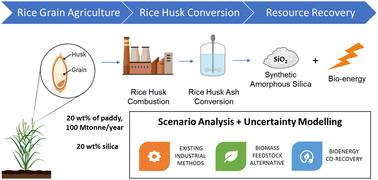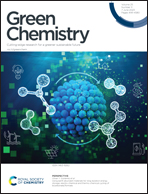Synthetic amorphous silica: environmental impacts of current industry and the benefit of biomass-derived silica†
Abstract
The production of Synthetic Amorphous Silica (SAS) is a billion-dollar industry. However, very little is shared publicly on the environmental impact of SAS production. This work provides the first complete treatment for the environmental impacts of SAS produced via the existing ‘dry’ and ‘wet’ industrial methods using Life Cycle Assessment (LCA). To provide a more robust method, this includes an evaluation of 8 environmental impact indicators and consideration for uncertainty during process comparison. Predictions are then used to compare the impact of the existing dry and wet methods as well as theoretical methods in which rice husk (RH) is used as a biomass-derived feedstock alternative. Results highlight cases in which using RH as an alternative feedstock is likely to be beneficial. However, it is demonstrated that these benefits are highly dependent on specifics of the process, region, and feedstock characteristics rather than the inherent “green-ness” of RH alone. Findings are therefore of significance to those interested in the existing SAS industry and the sustainable development of SAS. Moreover, findings also have potential implications for wider policy.



 Please wait while we load your content...
Please wait while we load your content...